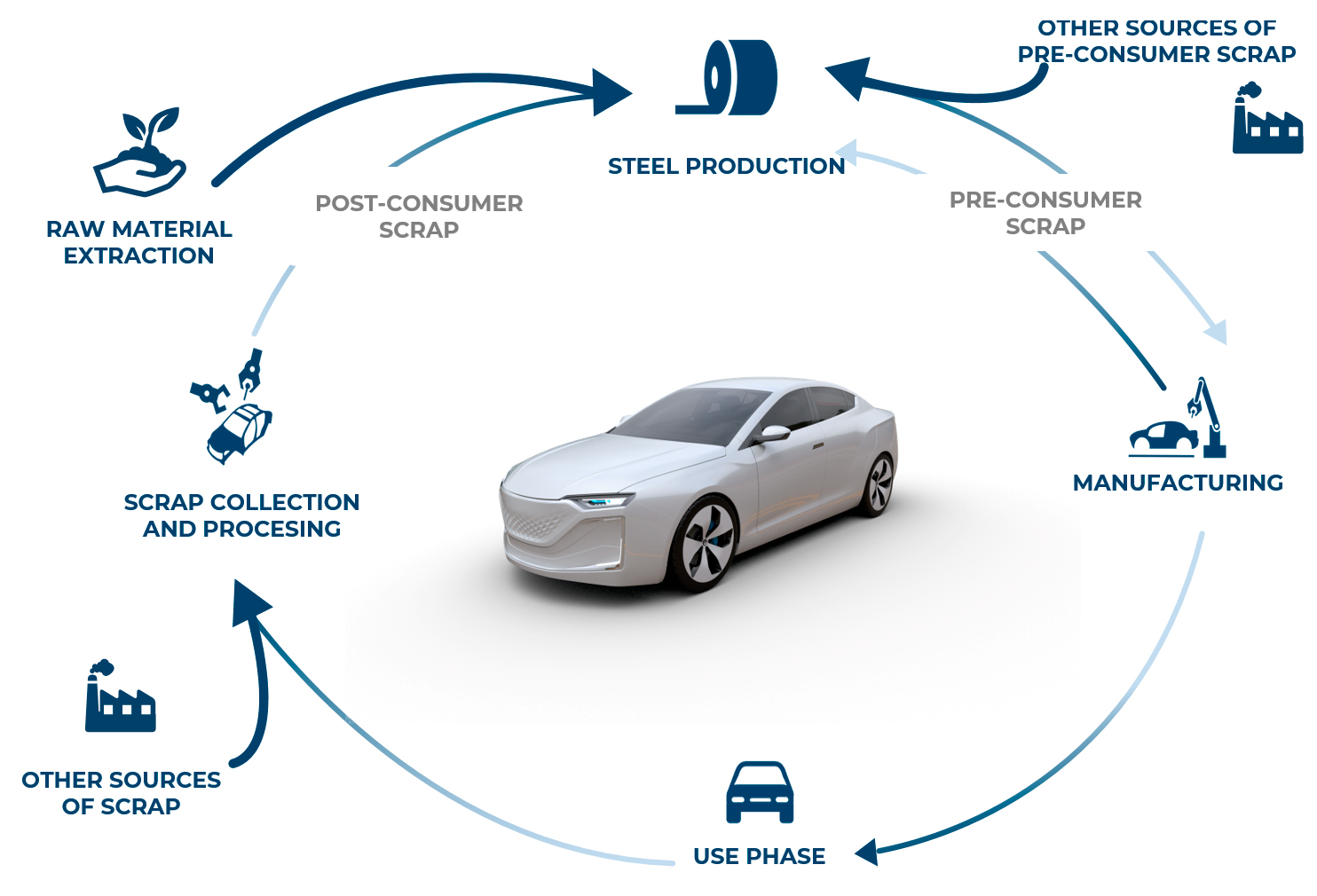Circularity strategy
Gestamp understands circularity as one of the basic pillars of sustainability since, on one hand, it contributes to the reduction of mineral extraction (mainly iron and aluminum), one of the aspects with the greatest environmental impact in the life cycle of Gestamp's products, and on the other hand, it promotes the optimization of waste management.
At Gestamp, R&D supports the approval of new materials (low emission, recycled, etc.) and we encourage co-development throughout the value chain in order to design the product needed for the mobility of the future.
In 2022, Gestamp acquires a strategic stake in Gescrap: a multinational group dedicated to metal recycling and total waste management for the industry and leader in Europe regarding the management of high-quality scrap. Gestamp seeks to enhance the circularity of its business model, promoting the use of its scrap as a secondary raw material in the production of low-emission steel.
